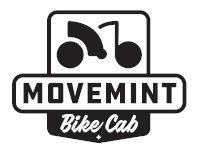In response to the Chicago ABC Chanel 7 news article and video found here:
 http://abclocal.go.com/wls/story?section=news/iteam&id=9220159
and
http://abclocal.go.com/wls/video?id=9220212&pid=9220159
Without a local legal framework and oversight these standards are not enforceable. While some will scoff at developing such a frame work, and working with the local authorities, doing so will ultimately bring about a more stable environment for pedicab companies to grow into. The legitimization that comes with a pedicab inspection, vehicle registration and pedicab operator license is invaluable. While there will be additional costs imposed to put these structures in place, the additional income to, and stabilization of the industry will more than offset the higher overhead.
Basic industry standards that have developed over time include:
1) Insurance requirements to protect the passenger in case of accident.
2) Definition of minimum vehicle standards (lights, brakes, seating, strong wheels, seat belts, etc.
3) Minimum vehicle appearance standards ( not rusty, upholstery in good condition, clear markings of company name, cab number and company phone number
4) Safe areas of operation (stay off roads with speed limits of over 35 or 40 mph and up. Requirements that pedicabs cross bridges where blind spots exist on a cycle path or side walk.
5) Requirement of purpose built pedicabs whose original intent was for transporting passengers safely on a commercial basis. (Banning adapted vehicle configurations that utilize components that were never manufactured to safely transport a driver and 2 to 3 passengers. I.E. Mountain bikes and home made trailers)
6) Regular vehicle inspection to make sure requirements are being met. Â Inspections should check the function of all safety systems to ensure minimum standards are being met. Â (Vehicle stopping distance, visability at night from distance, etc.)
7) Posting of fares.
8 ) Maximum passenger limits. (Typically 3 with seating space for all.)
9) Establishment of pedicab operator license that requires amongst other things, legal working status, and a valid united states drivers license (That is, no J1 visa students with international drivers licenses who are going to leave the country in a few months.)
10) Regular review and updating of ordinances to fix problems that develop.
11) Capping the number of pedicabs at a certain level that is able to form a “critical mass” of pedicabs able to meet the needs and demands of the public. (This is likely to grow over time. Too few will hurt the industry and prevent public recognition, too many will create excessive competition which could lead to eroding the public trust from desperate pedicab drivers taking advantage of tourists, etc. )
12) Capping the number of pedicabs that any one fleet owner can place in the market place to prevent monopolistic abuse of pedicab operators and help insure fair treatment to passengers.


